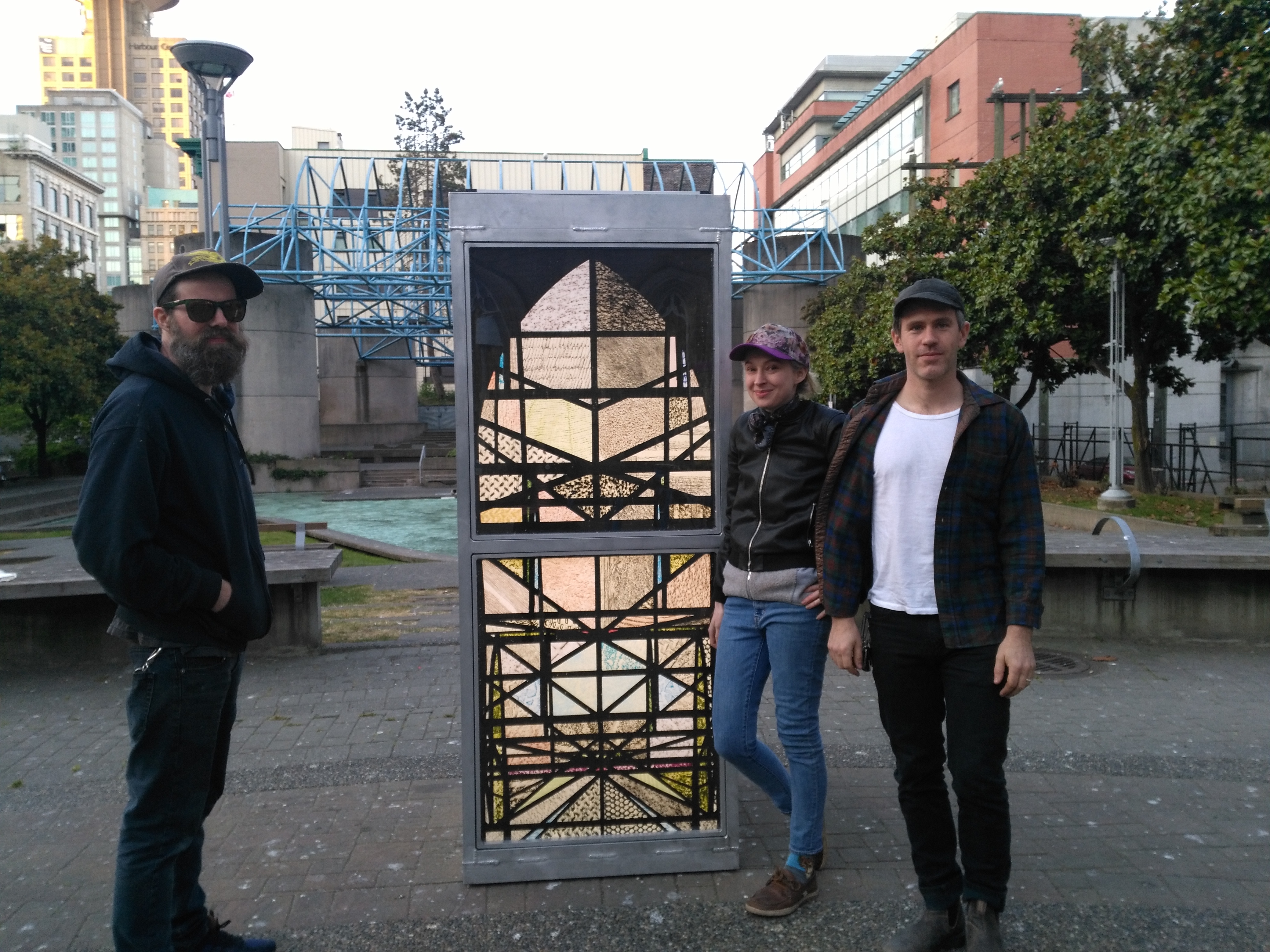A lot has happened on this land since I last visited Cathedral Park in Vancouver to learn about the “‘What are our Supports”‘ public art series in March.
A few new condos have gone up to be sure, and of course there is the federal government’s bid to buy and expand the Kinder Morgan pipeline which would bring raw bitumen through this Coast Salish territory. And on the various surfaces where these economic transactions occur, sit stories and experiences, unstirred and relegated to the side. Until someone seeks them out. Enter, the Dril Art Collective.
Dril Collective’s “Re-grounding the Footnotes” is the third in the “What are our Supports” series, an initiative of the Or Gallery and Richmond Art Galler yto inhabit the home-made booth structure that has been placed at the park.
The Dril Collective, composed of Dylan McHugh, Rachel White, Ian Prentice and Leisha O’Donohue, seeks cultural meaning and narratives in the everyday materials and surfaces on which we walk past or upon. I recently spoke to Ian and Rachel about their project.
They sought to fulfill their mission by generating rubbings of surfaces throughout the space. These include benches, cement, grates, and a nearby mosaic. These rubbings were then placed on the phone booth structure as stained glass manifestations. One notices that the stained glass shape represents the canopy structure overlooking the park, which in turn represents the Church opposite the street. History is replicated right under our noses.
“We wanted to look at footnotes in relation to well-known history of city — as in what are the footnotes to that versus the everyday occurrences we all see,” explains Prentice. He added that an impetus for the installation was to offer “a way to process the things that stimulate us through the senses.”
The installation represents “time and space coming together,” White added.
When asked how the installation relates back to the art series as a whole — the coming together of public space and art and dissecting what constitute “our supports” — the folks at Dril explained how the stained-glass structure representing textures of the city is itself a microcosm.
The structure acts as “a vessel by which to disseminate a story — a different story than the one we are used to and/or told,” maintains Prentice.
In this way, the installation can be seen to represent a non-linear interpretation of the city which we don’t always consciously experience, similar to the ways in which we pass by people, places, and things deemed unworthy by the commanding narratives, sentencing them to the margins of our minds. The footnotes.
And as this installation maintains space in the public realm, it also recognizes the importance in the collective ground beneath our feet, the surfaces we take for granted. White expressed the joy in the “unapologetic use of public parks, claiming that space and making the personal choice to discover new parts of the City.”
The accessibility and inclusivity of art installations such as “Re-grounding the Footnotes,” points to the very essence of the Dril Collective’s mission: to offer art as a participatory experience and not as a passive object to be observed in a pristine gallery. The collective asserts the value of allowing participants to create their own atmospheres and experiences when taking in the installation, and the community building that is inherent in this more active form of art.
As the Dril Collective re-grounds the footnotes, bringing to light the surfaces and textures that make up the heart of the city, there is a notion of democracy residing in the act of recognizing that all feet walk on the same surfaces.
The Drill Collective will be showcasing their structure evening until June 9, at Cathedral Park, Vancouver. There will be a site-responsive sound work on June 9, by artists John Brennan, Elisa Ferrari, Michelle Helene Mackenzie and Justin Patterson.
Photo: Tania Ehret
Like this article? Please chip in to keep stories like these coming.




